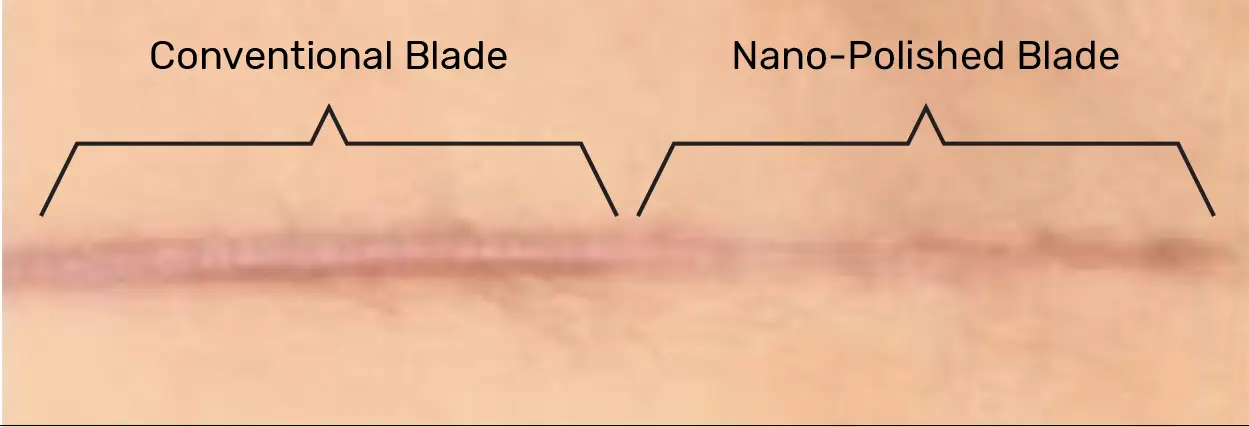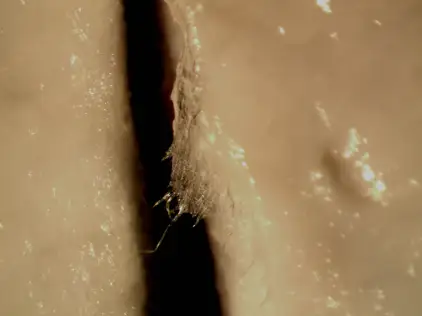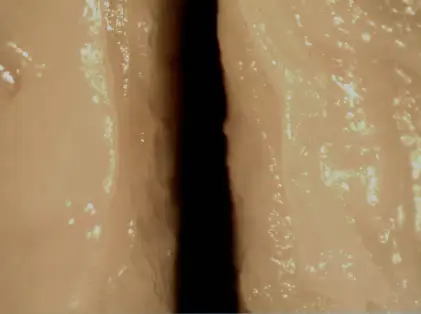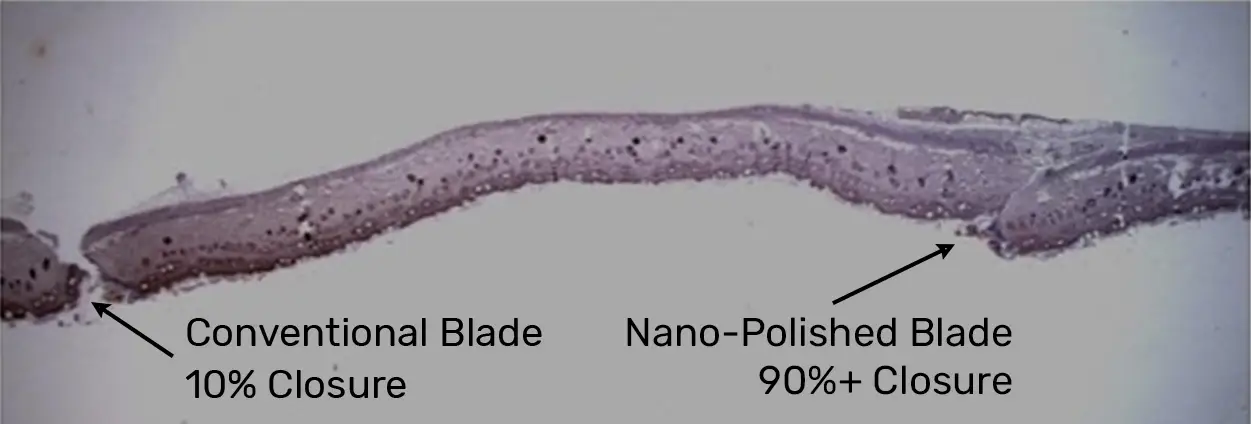Did you know that there hasn’t been a significant advancement in surgical scalpels for over 100 years? Until now, that is. Planatome nano-polishing is transforming surgical cutting instruments of all kinds, enabling faster, more comfortable healing and smaller, less noticeable scars.1-8
You’ve heard of minimally invasive surgery; Planatome brings that concept to every incision, because every incision matters. Planatome nano-polished surgical instruments have the smoothest, most minimally invasive blades, which is why they deliver the best clinical results.1-8

Continuous midline laparotomy in human dermal tissue (abdomen)4
• Reduces scarring by 86% vs standard scalpels in a study of facelift patients3,4

The rough edges of standard blades tear and damage soft tissue. Notice the damaged, ragged tissue, which takes longer to heal and may leave a more noticeable scar.1-8

The Planatome nano-polished blades create clean, smooth incisions for faster, more comfortable healing and smaller, less noticeable scars.1-8
Faster healing—90% healed in 72 hours vs 10% with standard scalpels1

Improves nerve recovery5
25% nerve recovery at 5 weeks vs 9% with standard blades5
Shrinks tissue inflammation2,6
Enhances postoperative comfort2,7,8
Whether you’re undergoing an orthopedic or cosmetic procedure, Planatome nano-polished instruments can help you heal faster and more comfortably, with smaller, less noticeable scars after any surgery.1-8
During your initial consultation with your surgeon, consider asking if they use Planatome nano-polished instruments.
Planatome blades are advanced surgical tools used by your surgeon to make cleaner, more precise incisions. This can help reduce tissue damage, scarring, and recovery time. Additionally, the reduction in tissue damage reduces the risk of postoperative complications, such as surgical site infections.
While patients typically don’t choose the instruments used for their procedure, you can advocate for better care by asking your surgeon: "Do you use Planatome blades in your procedures? I’ve read they may reduce scarring and recovery time—could that benefit me?"
Most surgeons appreciate well-informed patients and may offer Planatome blades and instruments as an option if suitable.
Absolutely. Planatome blades undergo rigorous quality control and meet or exceed medical device safety standards. They are sterile, single-use, and designed for maximum patient safety.
Yes. Because the blades reduce tissue trauma, they may contribute to smaller, less noticeable scars and smoother healing, which is especially important for cosmetic procedures, as well as those where the incision areas are visible.
Yes. Planatome blades are part of the surgical tools selected by your healthcare provider and are typically included in the overall procedure cost, not billed separately.
For patients at a higher risk of hypertrophic or keloid scarring (eg, diabetics, immunocompromised individuals, those with melanin-rich skin, and pregnant women), the ultra-clean incisions of Planatome blades reduce inflammation and cellular trauma, promoting smoother healing and reducing abnormal scar formation.
Patients whose surgeons use Planatome blades often report less discomfort in the days following surgery due to reduced nerve and soft tissue trauma.
Are you into medical research?
If so, you're in luck! We invite you to read our whitepapers and studies to learn more about the benefits of Planatome nano-polished surgical instruments and how they deliver better clinical results.1-8
References
Bigdelle V, Ling MX, Clifford L, Spiro CL, Lee RC. Effect of scalpel cutting edge roughness on surgical incisional inflammation and scarring. Am J Obstet Gynecol.
Data on file, Planatome, LLC. Whitepaper. Superiority of nano-polished surgical blades: an analysis of their impact on healing and implications for postoperative outcomes.
Data on file, Planatome, LLC. Agullo FJ, Sanchez MJ, Jeffcoat K. Scar occurrence with use of nano-polished blade versus conventional scalpel blade on facelift patients: a single center retrospective study. 2025.
Data on file, Planatome, LLC. Internal company study. Choi JW. Planatome initial human case midline laparotomy study. 2017.
Prescher H, Ling MX, Bigdelle V, Spiro CL, Lee RC. Scalpel edge roughness affects post-transection peripheral nerve regeneration. Surg Open Sci. 2021;4:1-doi.org/10.1016/j.sopen.2020.11.002
Prescher H, Ling MX, Bigdelle V, Spiro CL, Lee RC. Scalpel edge roughness affects post-transection peripheral nerve regeneration. Surg Open Sci. 2021;4:1-doi.org/10.1016/j.sopen.2020.11.002
Data on file, Planatome, LLC. Internal company document. Lee RC. Macrophage density post nano-polished blade incision. 2020.
Eijkelkamp RW. Significantly reduced macrophage density, linked to pain development through the production of inflammatory mediators. Presented at: British Society of Rheumatology; August 2017.